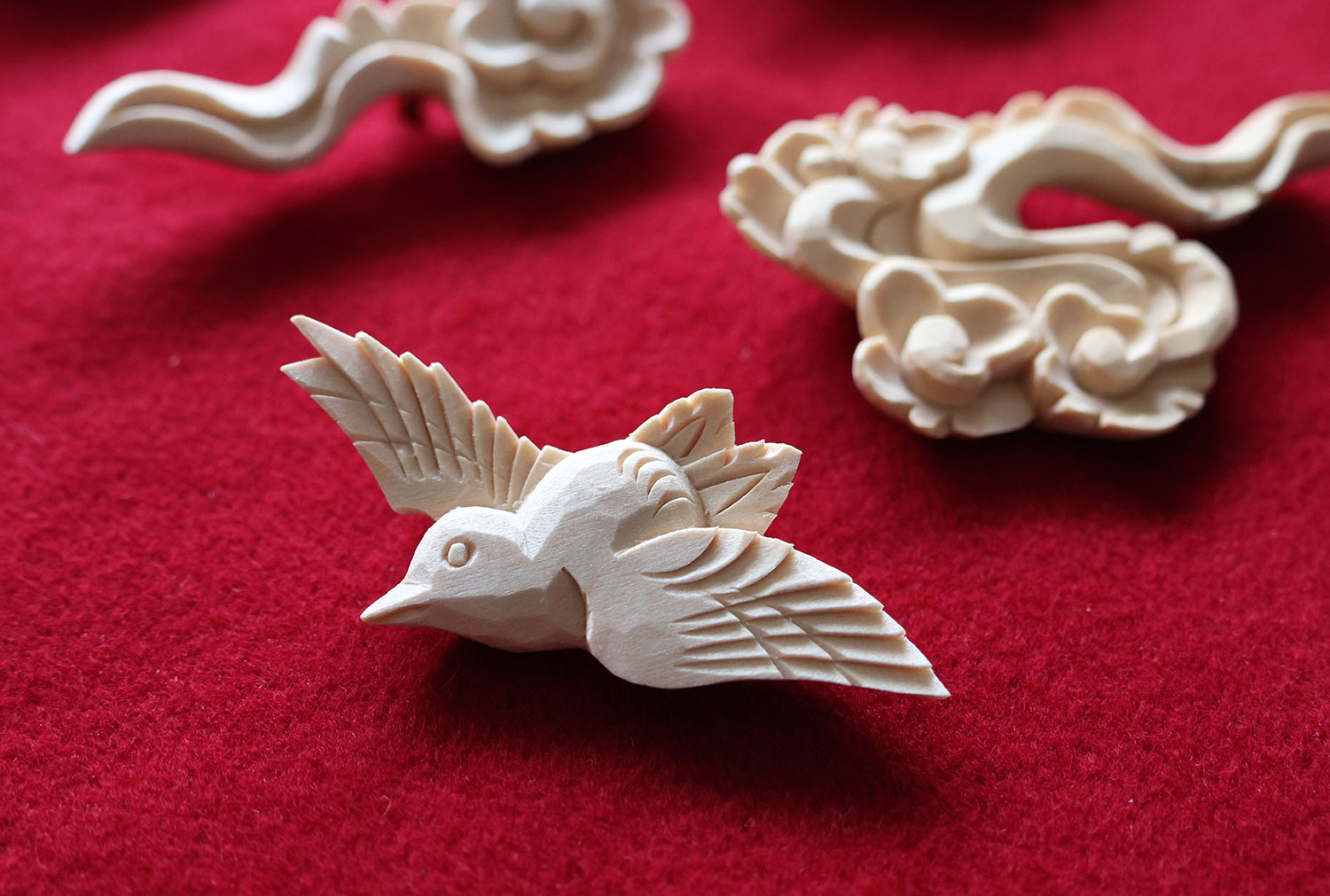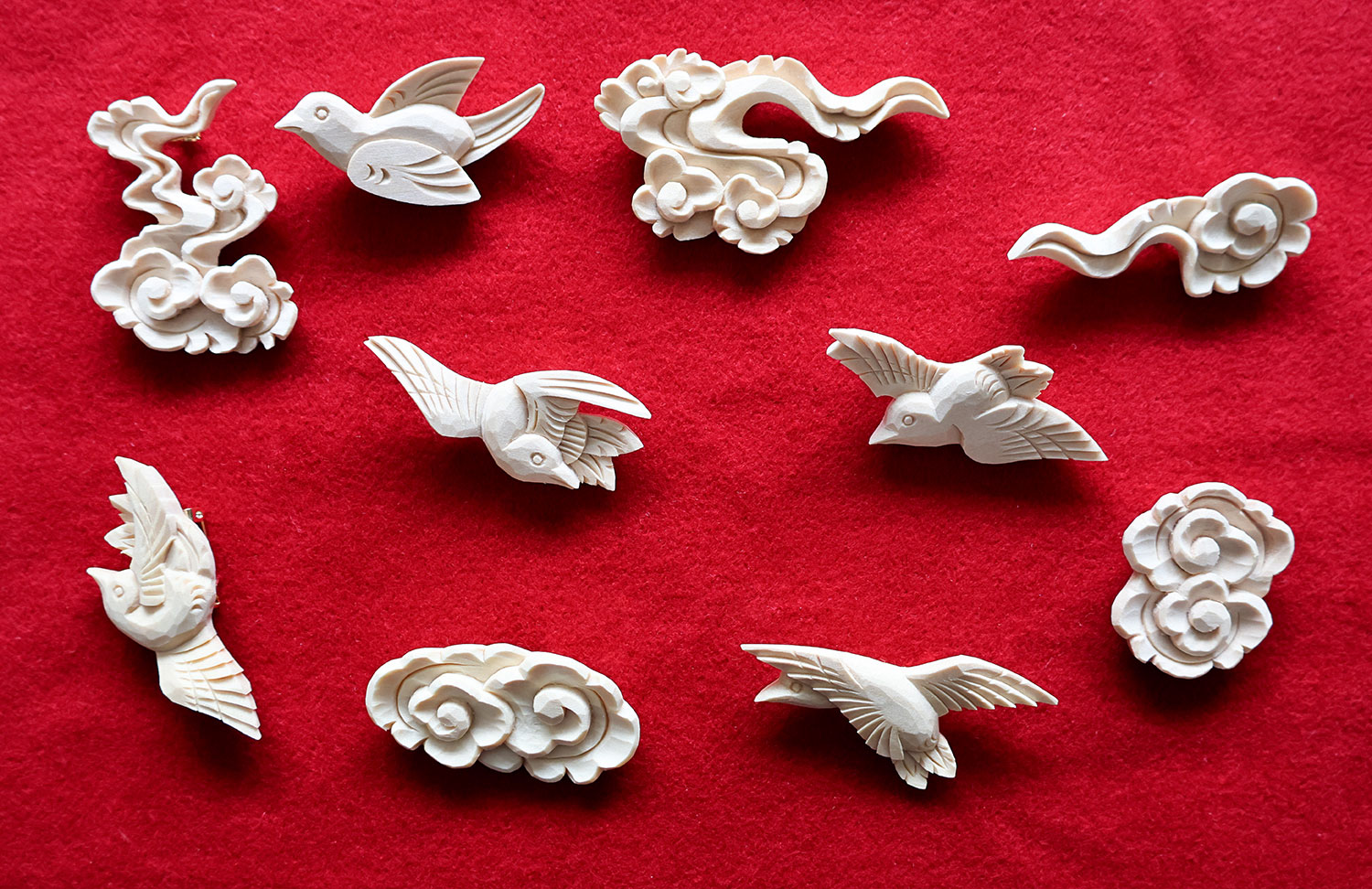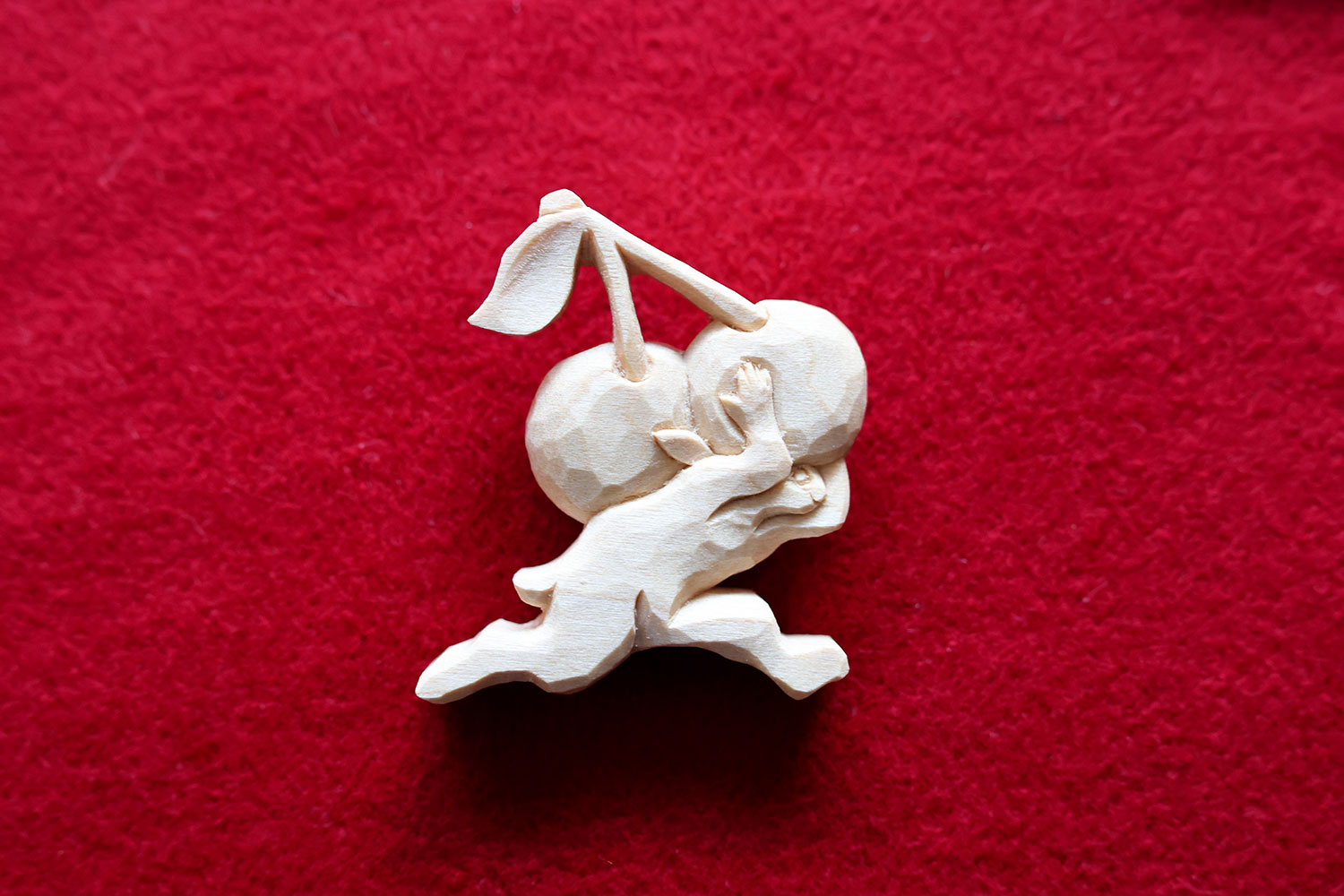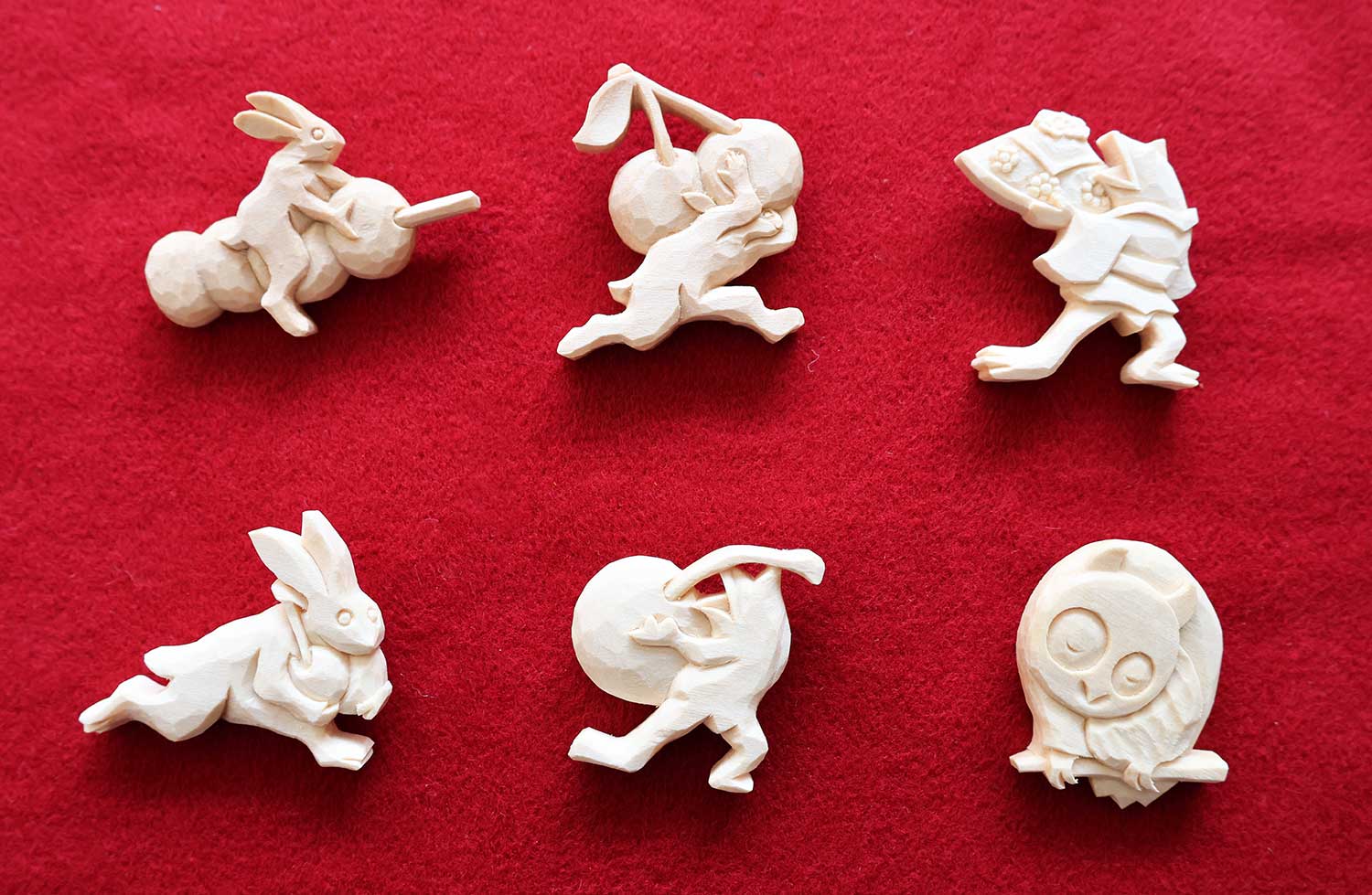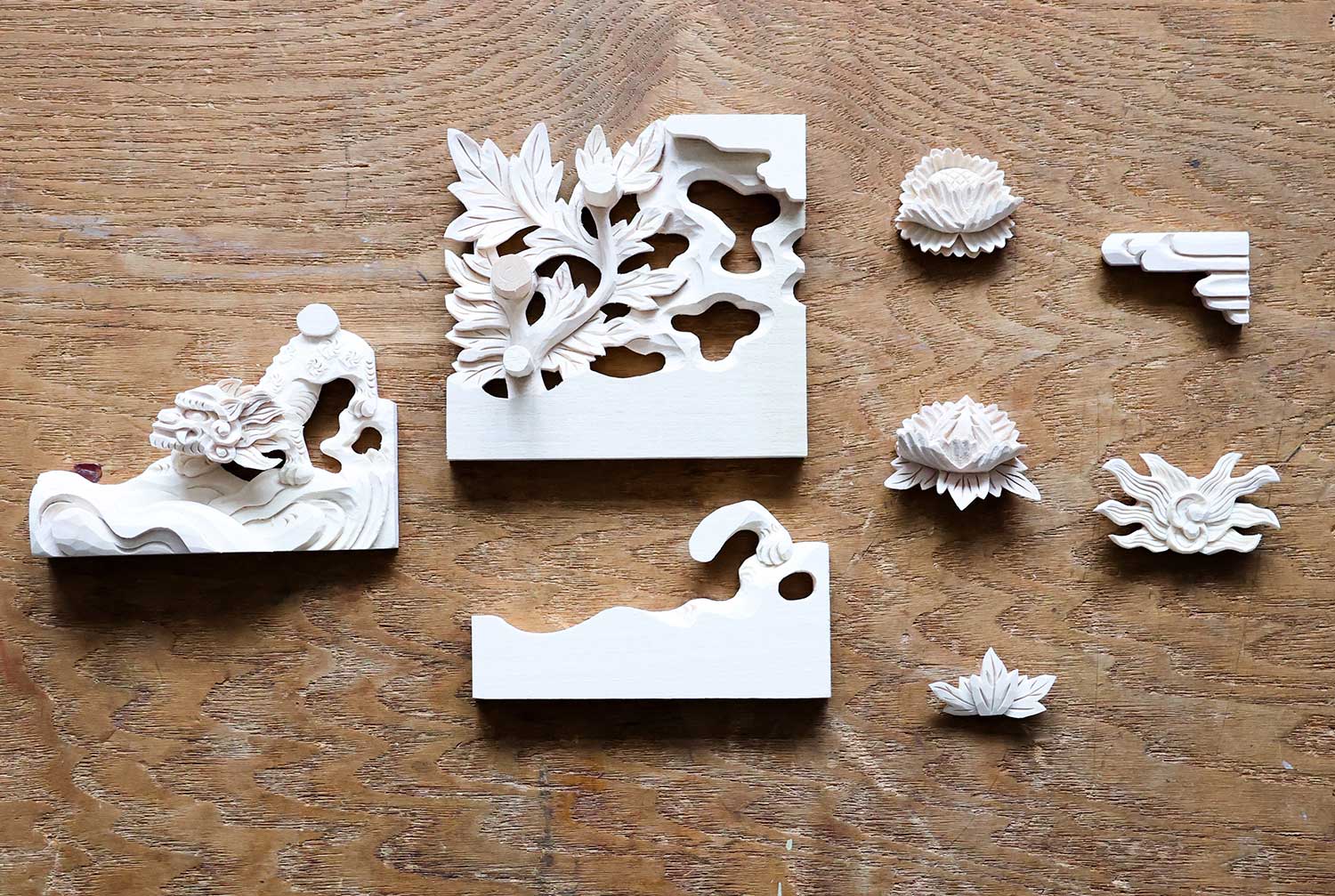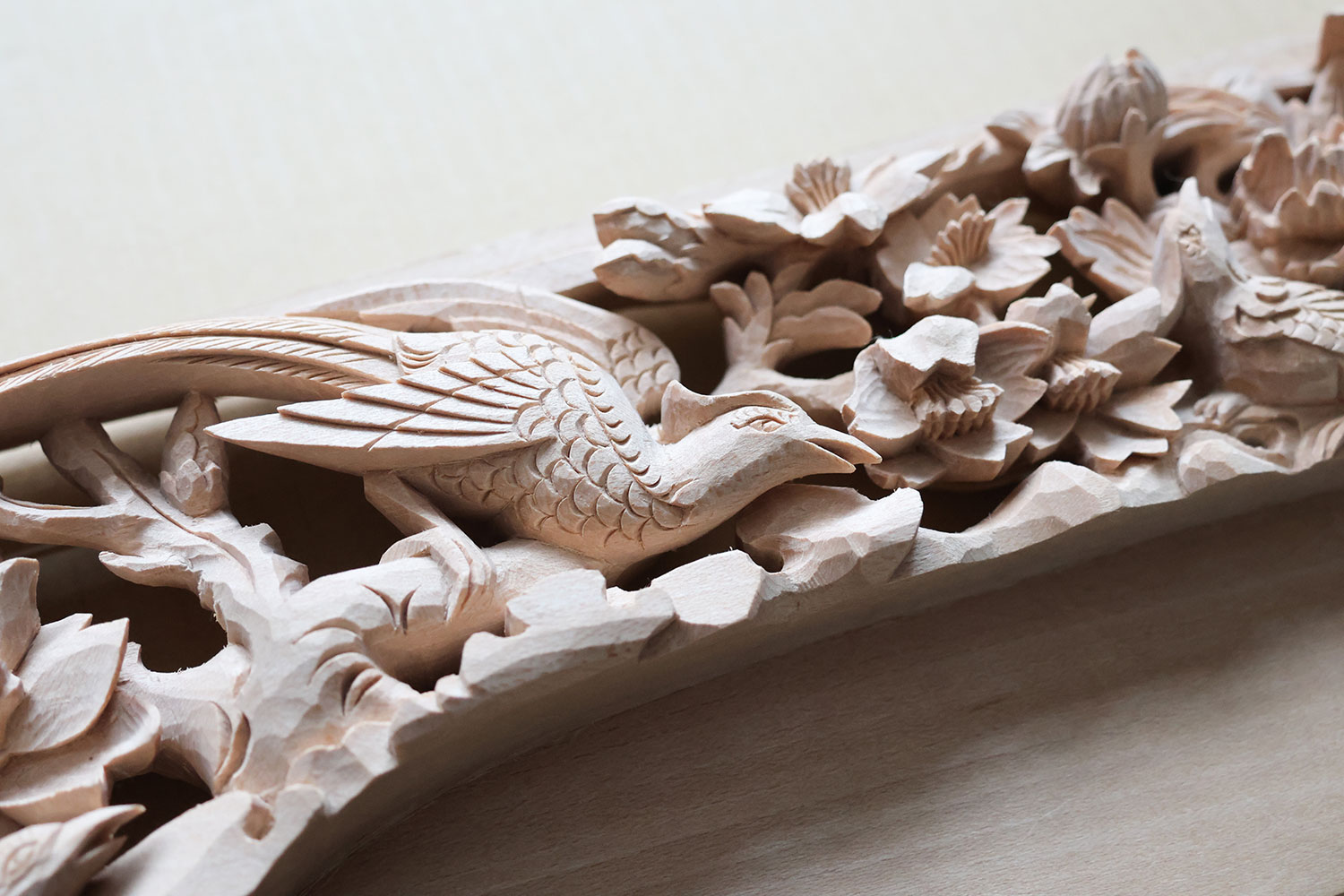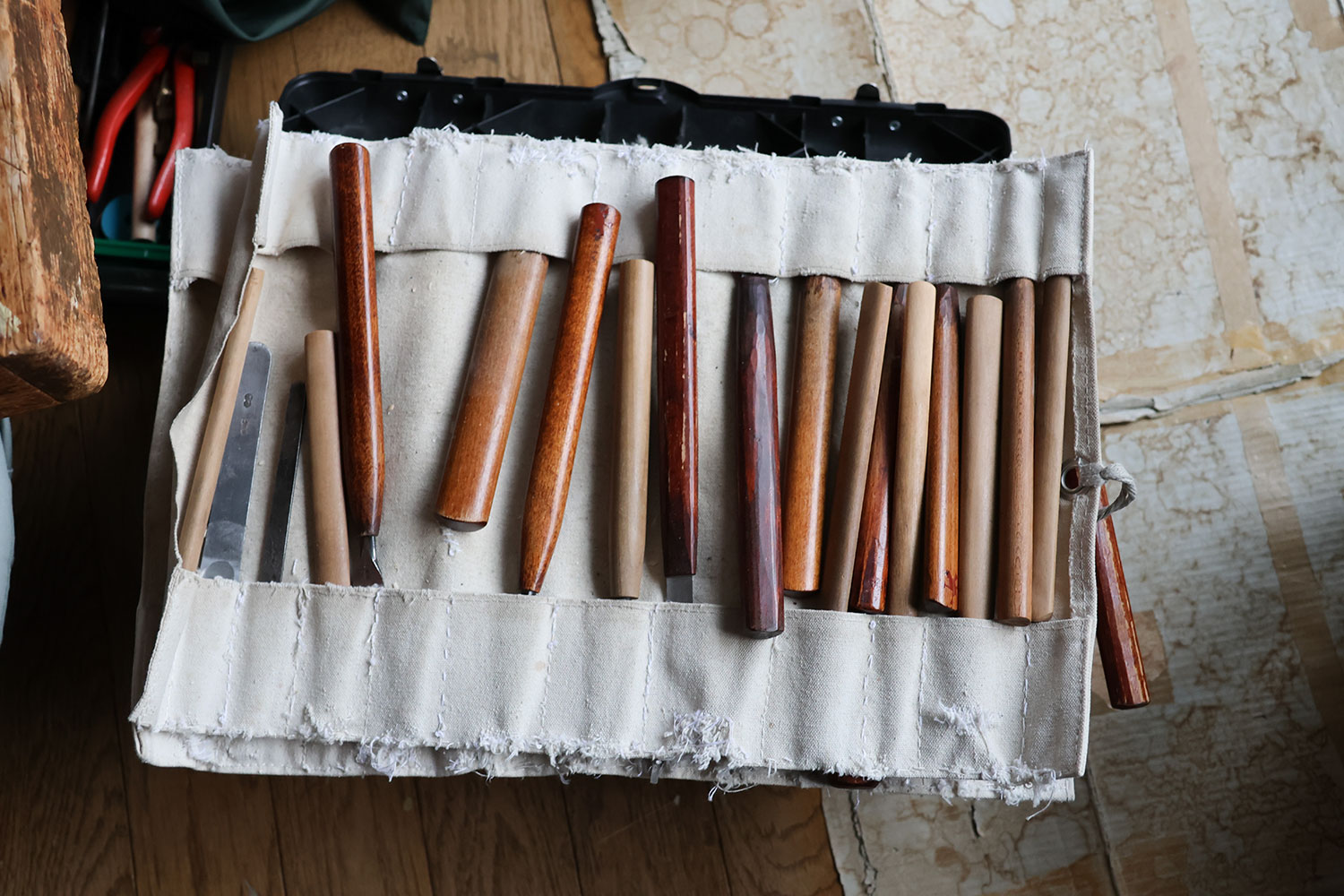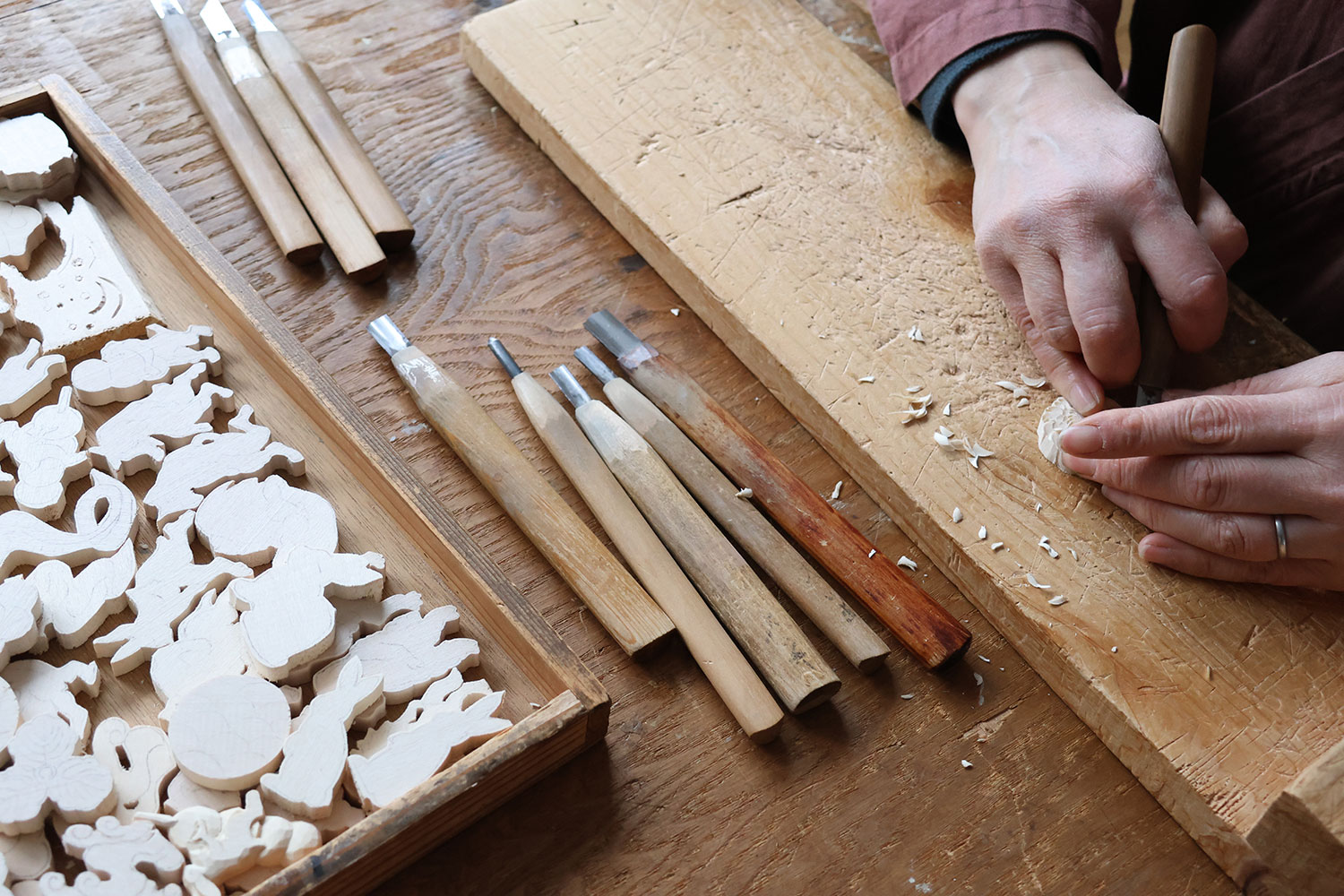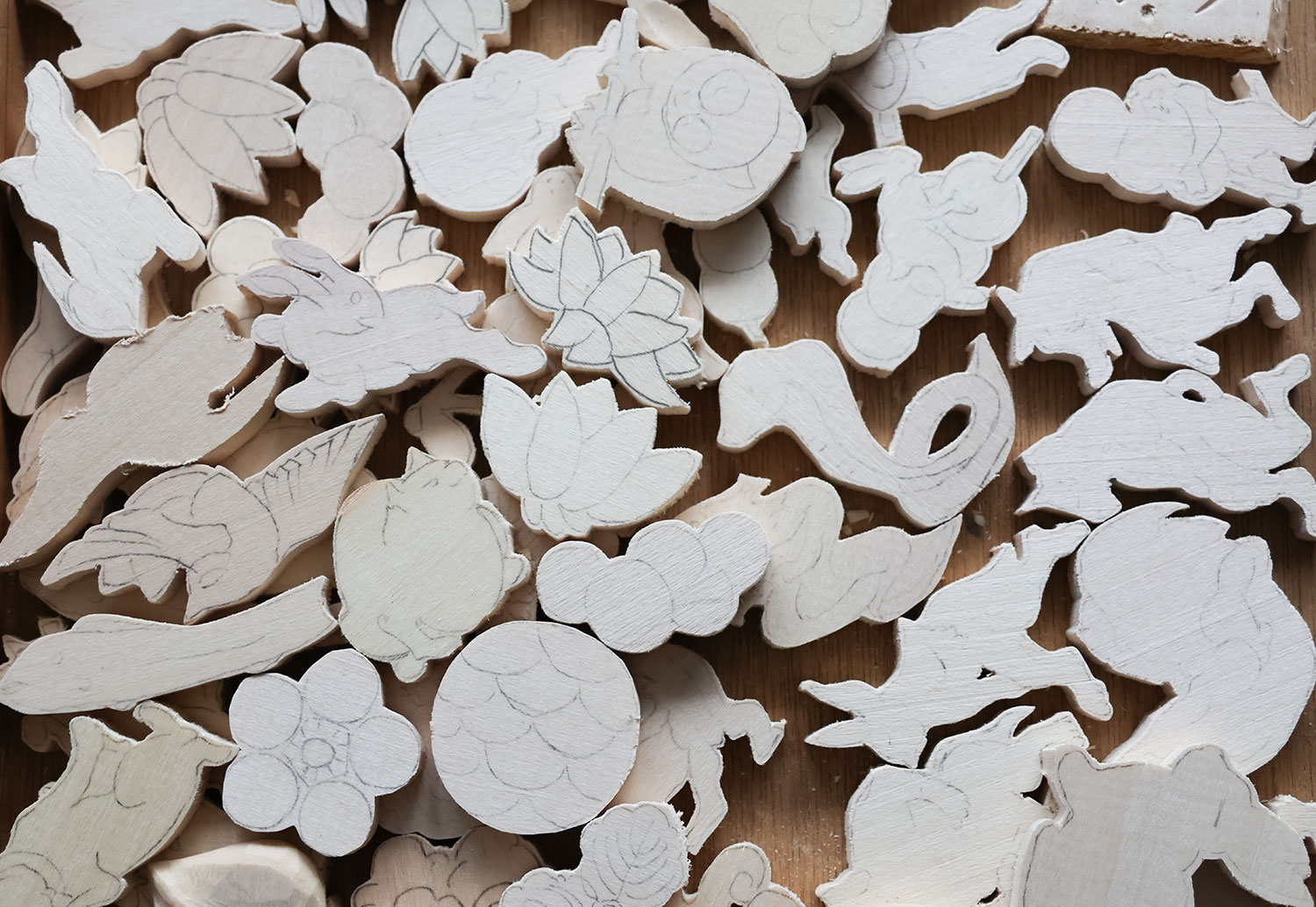
Forest

Tradition

Community
Heartwarming Wood-carved Brooches, Created by a Carving Artisan of Yamagata Buddhist Altars
Declining traditional crafts that can make a connection with the next era
Kazue Ashino
(Yamagata Prefecture)
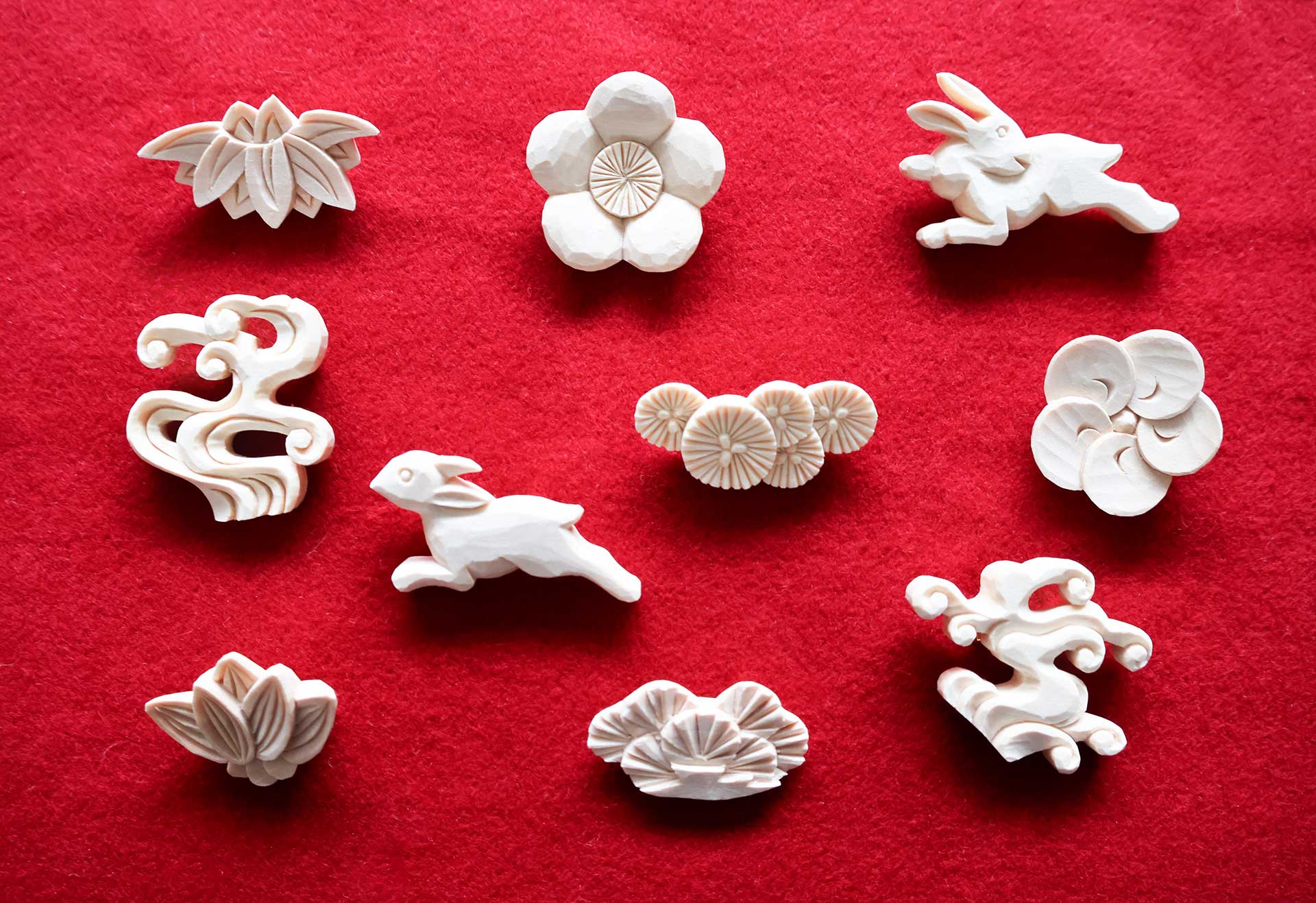
Overview
Yamagata Buddhist altars are a traditional craft that has been continued in Yamagata Prefecture, Japan, since the Kyoho era (1724–1777). Traditionally, in Japanese Buddhist households, Buddhist altars are set up to enshrine the principal deity and ancestors, and people offer prayers and gratitude to their ancestors in their daily lives. Traditional wooden altars, carved and adorned with metal fittings and lacquer, are made throughout Japan, but their characteristics and production methods vary depending on the locally sourced wood type, craftsmanship, and culture.
Ms. Kazue ASHINO, a skilled carver known for the beautiful and solemn carvings of Yamagata Buddhist altars, has been creating wood-carved “kibori brooches” since 2016, using designs inspired by traditional patterns from Yamagata Buddhist altars and Japanese paintings. “Kibori” means “woodcarving” in Japanese. Using Japanese linden wood from Yamagata Prefecture and Iwate Prefecture, each brooch is meticulously hand-carved, displaying intricate details, charming liveliness, and warmth. As the demand for traditional Buddhist altars decreases nationwide and as the number of artisans crafting Yamagata Buddhist altars diminishes, Ms. Ashino is dedicated to preserving a traditional craft that has been passed down in Yamagata for centuries, helping to ensure its continuity into the future.
Successful outcomes
- The initiative received recognition by winning awards such as the Yamagata Excellent Design Award in 2017 and an Encouragement Award at the Wood Design Awards in 2018.
- The work has also garnered media attention through coverage in prominent magazines, newspapers, television, and radio programs.
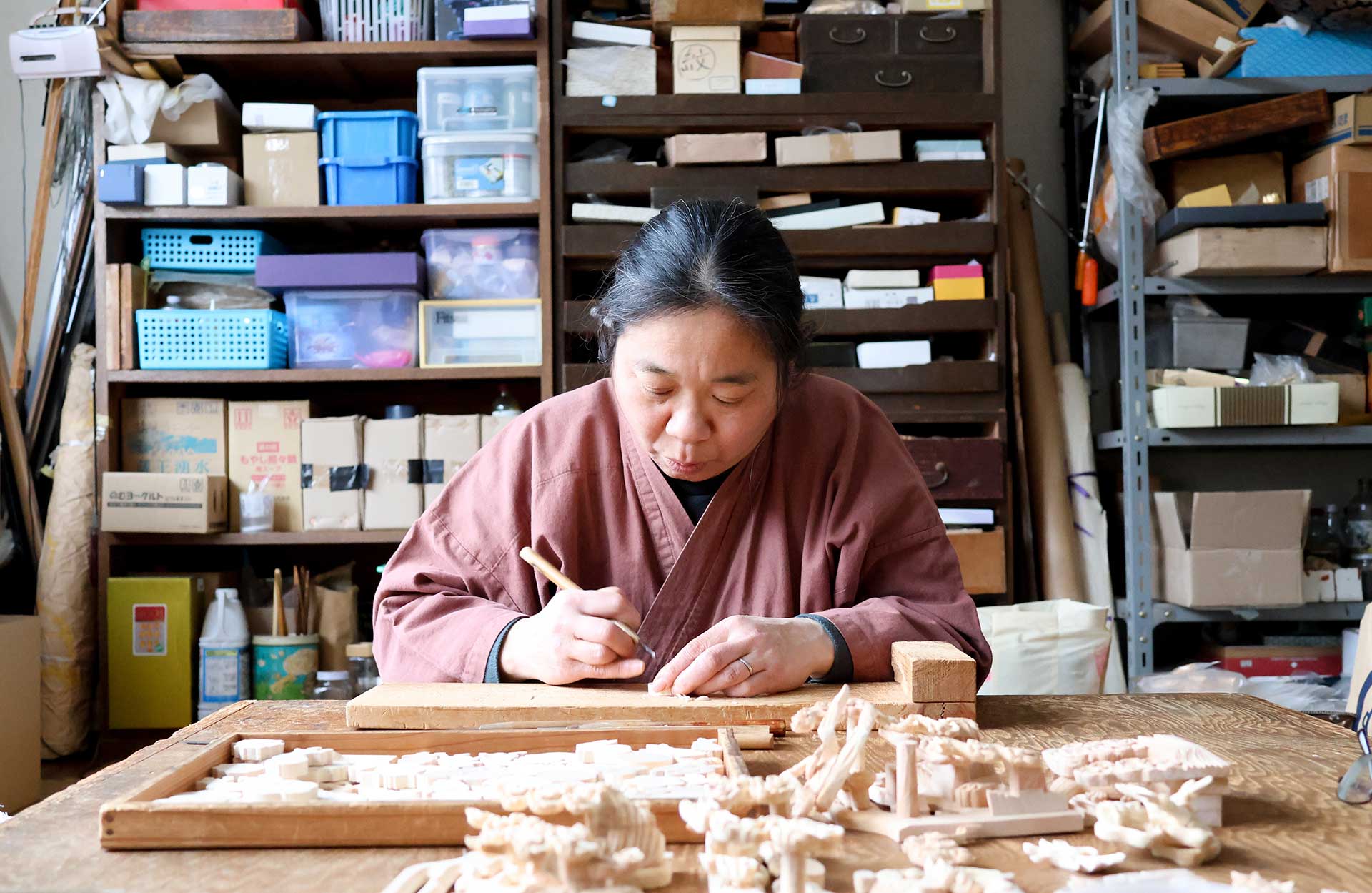
Ms. Kazue ASHINO: Communicating the true value of traditional crafts through her kibori brooches via proficient carving skills
Ms. Kazue ASHINO is the first and only female carving artisan in the history of Yamagata Buddhist altars. Born in Higashine City, Yamagata Prefecture, she pursued studies in Buddhist statue restoration at Tohoku University of Art and Design before establishing herself in the world of handicrafts such as woodworking. Ms. Ashino became a carving artisan for Yamagata Buddhist altars in 2008 at the age of 36. Even now, 16 years later, she humbly expresses, “It’s a daily practice,” demonstrating her earnest dedication to her craft as she strives to create better pieces and further refine her skills.
A prototype for her first kibori brooch was created in 2012. It all started when Ms. Ashino participated as a member of “Yamagata Mirai no Takumi Kai” (“Artisans of the Future in Yamagata”) in an exhibition of traditional crafts. This opportunity led to the decision to sell her creations. At the exhibition, she transformed wood carvings of birds and flowers using traditional motifs of Yamagata Buddhist altars into brooches and offered them for sale.
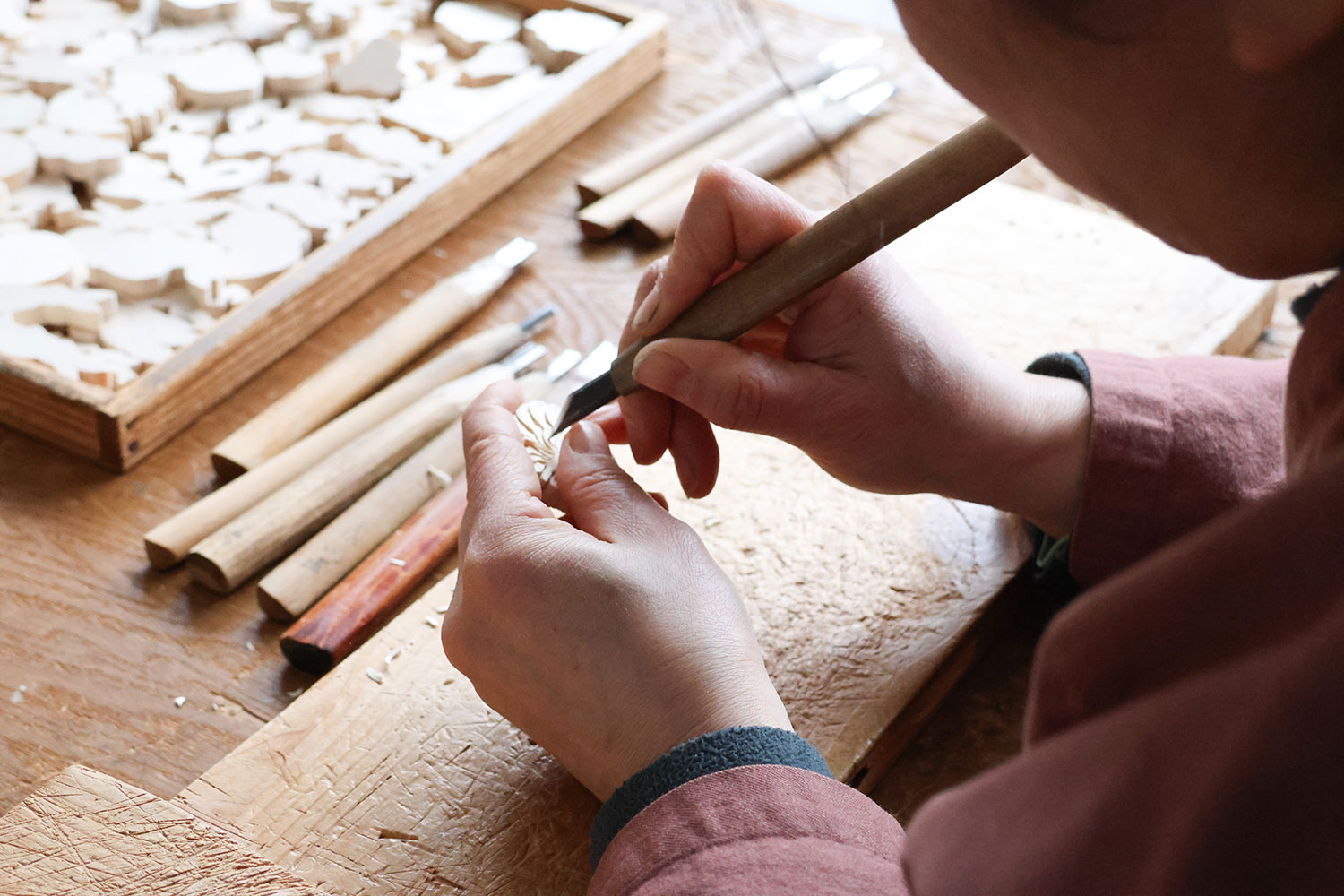
The full-scale commercialization of the brooches began three years later in 2015. Ms. Ashino collaborated with a craftsman specializing in Yamagata knives to enter a design competition organized by the prefecture. They adorned the knives’ handles and sheaths with carvings. Although they did not win, this innovative attempt by two young artisans attracted attention. As a result, they earned the opportunity to participate in a “Brush-up School” hosted by the Yamagata Research Institute of Technology. The school provided a platform to learn about improving products and conveying their appeal more effectively.
During consultations with a prominent buyer serving as an instructor, Ms. Ashino received valuable advice that encouraged her to further refine her carvings and proceed with the commercialization of her wooden brooches. Through iterative prototyping to achieve the perfect size for wearing, she designed motifs inspired by auspicious symbols such as “pine, bamboo, and plum” and “leaping rabbit.” Ms. Ashino painstakingly searched for brooch pins and packaging boxes, exploring shops in Tokyo to find the perfect ones. Finally, in 2016, she unveiled the “kibori brooch” at an exhibition attended by buyers from across Japan. Subsequently, Ms. Ashino’s brooches received recognition, winning awards at the Yamagata Excellent Design Awards 2017 and receiving an Encouragement Award at the Wood Design Awards.
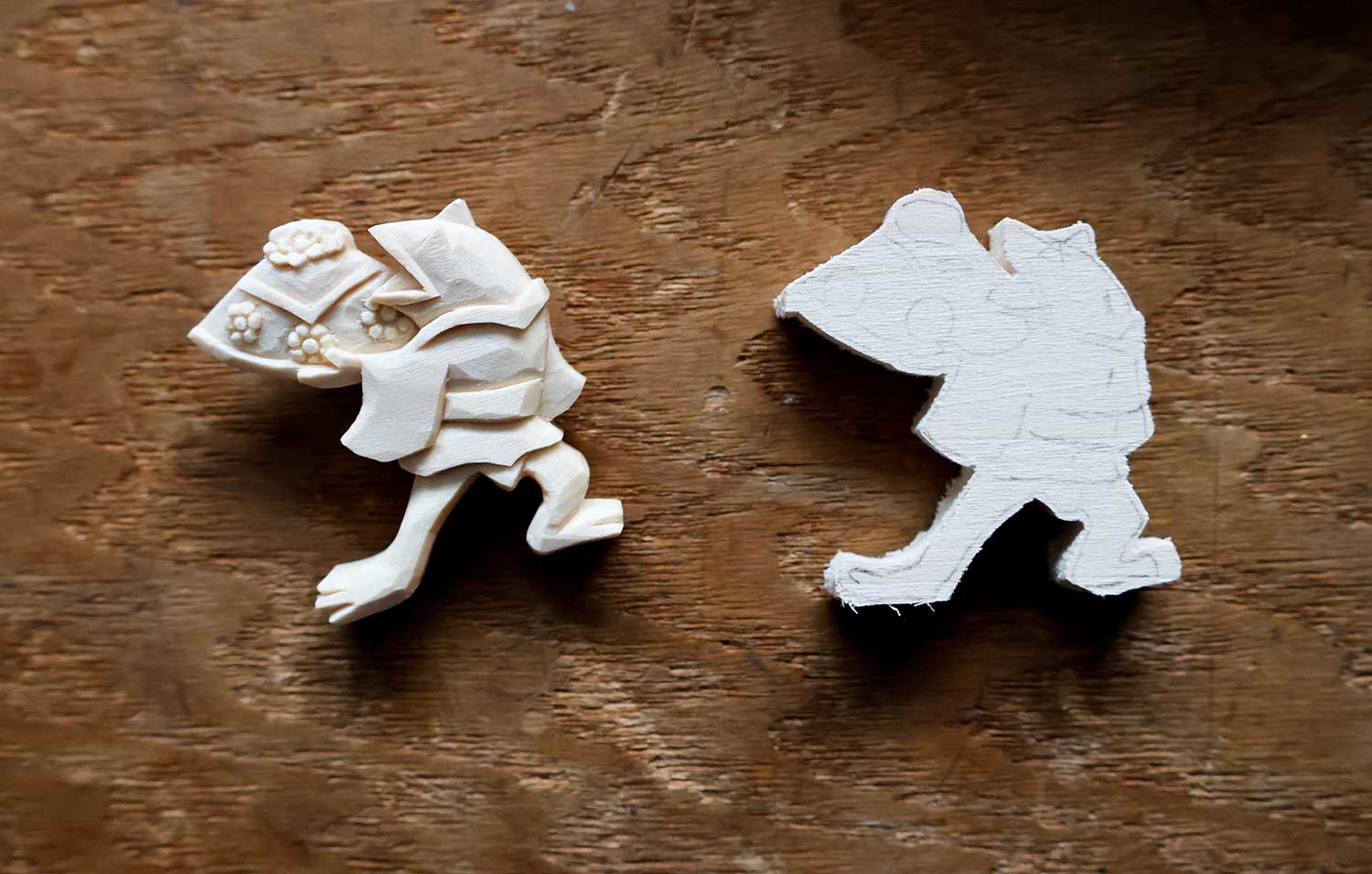
The prices of the brooches range from 3,600 to 6,600 yen, excluding tax. Currently, they are mainly sold at souvenir shops and at various events in Yamagata Prefecture. The process begins with sourcing the wood, drawing designs on wooden boards, removing the excess wood, and finally finishing with carving. It takes about one hour for simple designs and two hours for more-complex ones. However, according to Ms. Ashino, what is important in carving is sharpening the carving knife: “Each knife is sharpened by hand, and the level of sharpness affects the finish. The time spent sharpening may be longer than the carving itself.” After carving, the pieces are immersed in urethane resin, dried, and finished by attaching a brooch pin with adhesive.
She comments: “I create with the intention of bringing joy to others. The theme for me is always how much of the carving marks to leave visible, so that people can recognize that they are handmade.”
Over 50 designs have been created so far. Some designs have also emerged from collaborations with a famous magazine and students from the Tohoku University of Art and Design.
Alongside her work in Buddhist altar carving, Ms. Ashino’s kibori brooches serve to spread awareness of Yamagata’s Buddhist altars to various generations and regions. She regularly teaches at events where simple kibori brooches can be made and, in recent years, has also negotiated with buyers from France, Taiwan, and Hong Kong.
As her son will soon enter junior high school, Ms. Ashino has expressed a desire to create time for brainstorming on new pieces once parenting responsibilities ease a bit, and she also wants to explore more online sales opportunities.
kibori brooches
Kazue Ashino
https://ashinokazue.jimdofree.com/

